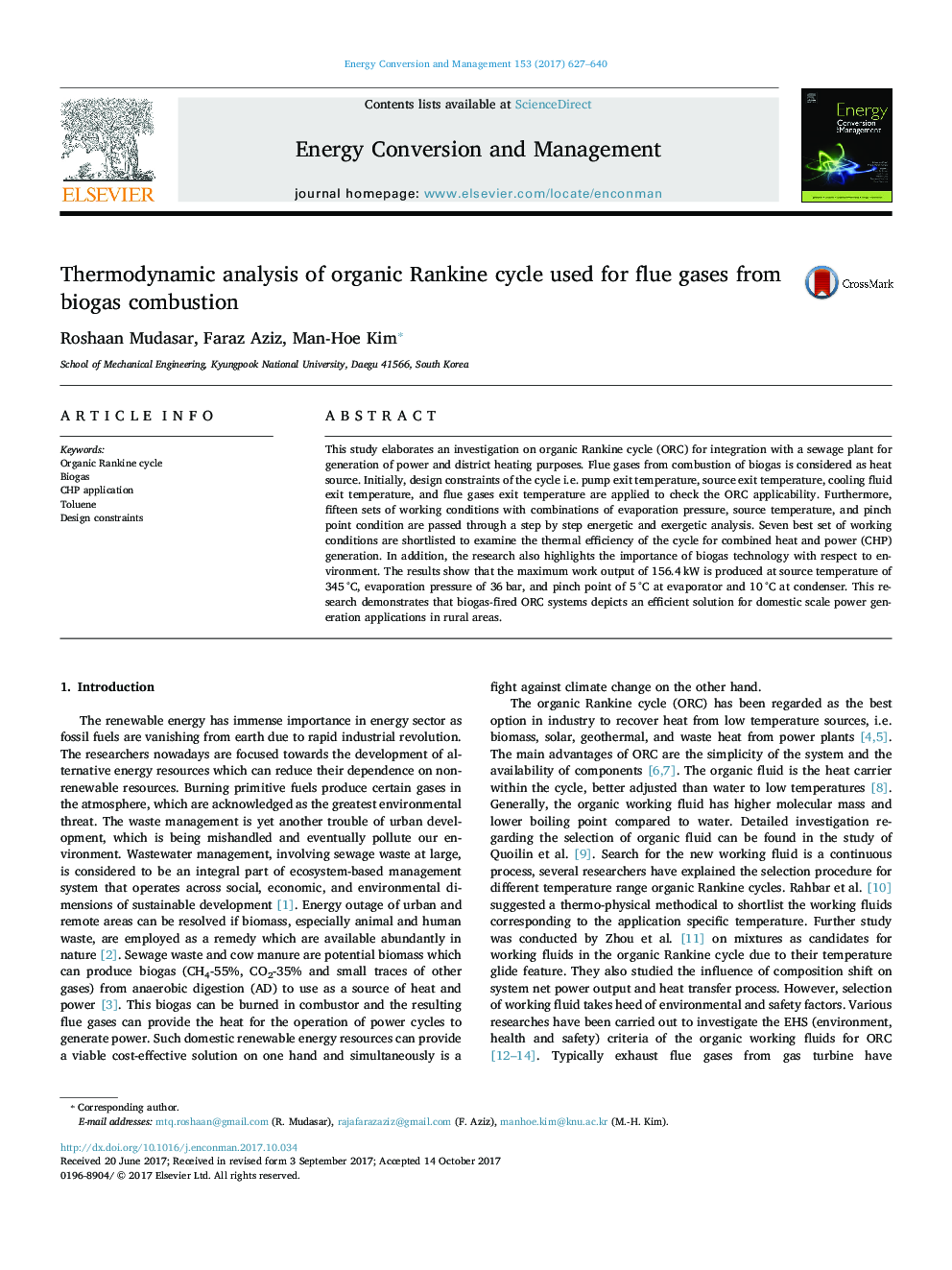| Article ID | Journal | Published Year | Pages | File Type |
|---|---|---|---|---|
| 7159758 | Energy Conversion and Management | 2017 | 14 Pages |
Abstract
This study elaborates an investigation on organic Rankine cycle (ORC) for integration with a sewage plant for generation of power and district heating purposes. Flue gases from combustion of biogas is considered as heat source. Initially, design constraints of the cycle i.e. pump exit temperature, source exit temperature, cooling fluid exit temperature, and flue gases exit temperature are applied to check the ORC applicability. Furthermore, fifteen sets of working conditions with combinations of evaporation pressure, source temperature, and pinch point condition are passed through a step by step energetic and exergetic analysis. Seven best set of working conditions are shortlisted to examine the thermal efficiency of the cycle for combined heat and power (CHP) generation. In addition, the research also highlights the importance of biogas technology with respect to environment. The results show that the maximum work output of 156.4â¯kW is produced at source temperature of 345â¯Â°C, evaporation pressure of 36â¯bar, and pinch point of 5â¯Â°C at evaporator and 10â¯Â°C at condenser. This research demonstrates that biogas-fired ORC systems depicts an efficient solution for domestic scale power generation applications in rural areas.
Related Topics
Physical Sciences and Engineering
Energy
Energy (General)
Authors
Roshaan Mudasar, Faraz Aziz, Man-Hoe Kim,
